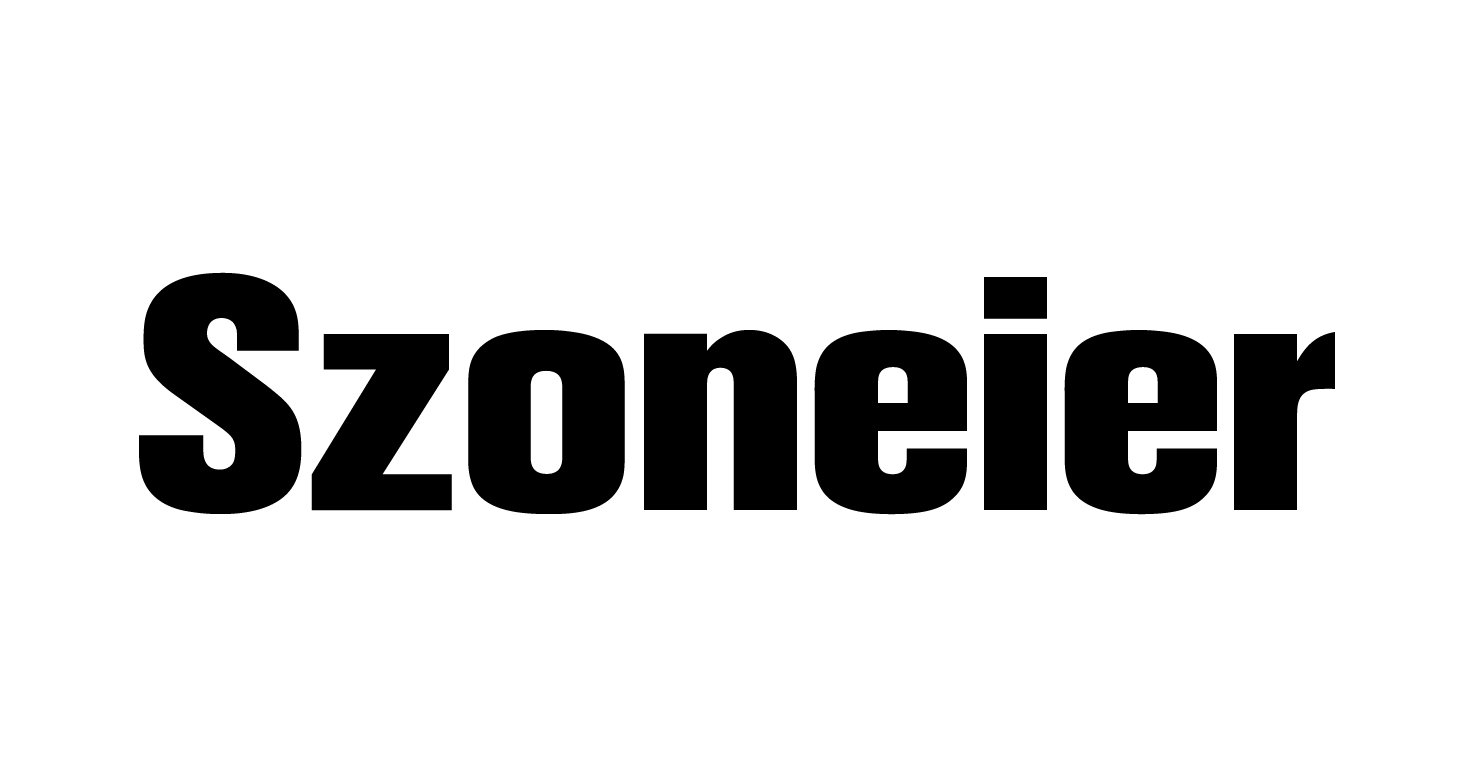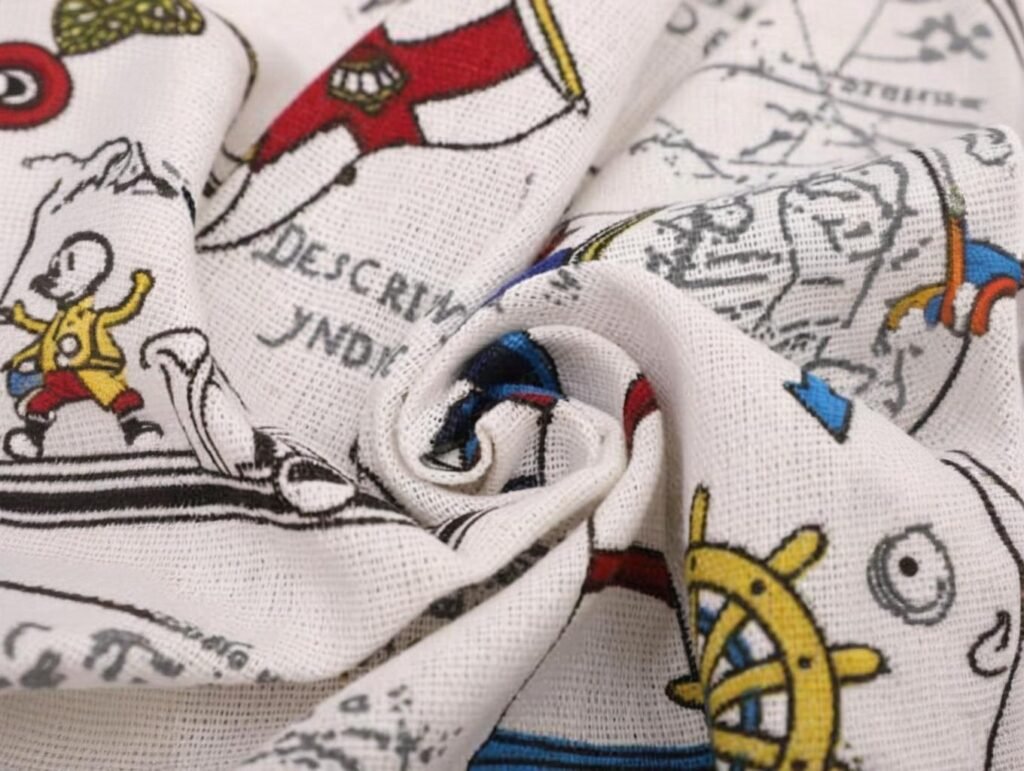
Canvas fabric is no longer just for tents and tote bags. In 2025, it’s powering the durability of designer backpacks, streetwear jackets, sustainable upholstery, and even industrial tarpaulins. As consumer expectations grow, so does the demand for top-tier canvas manufacturers who offer not just strength, but eco-integrity, surface customization, and consistent quality. But how do you find the right supplier when dozens claim to be the best? The top canvas fabric manufacturers in 2025 stand out for their ability to combine durability, design customization, sustainable materials, and low-MOQ flexibility. Leading suppliers are based in China, India, Pakistan, Turkey, the U.S., and Europe—each offering unique strengths in terms of weave quality, organic cotton sourcing, water-repellent finishes, and modern dyeing techniques.
The global sourcing landscape has become more transparent and competitive. Brands—whether emerging or established—now need more than just price. They need suppliers who deliver performance and integrity. Let’s explore what really sets these manufacturers apart. But first, imagine you’re launching an eco-friendly bag collection for a summer market in California—your customers want rugged but breathable material, vivid color, and an ethical supply chain. Where would you start looking?
What Makes a Canvas Fabric Manufacturer Stand Out in 2025?
In 2025, the canvas fabric market is no longer defined by bulk and basic offerings—it’s driven by precision, performance, and purpose. Whether you’re creating artisanal tote bags, eco-conscious tents, or rugged industrial workwear, the manufacturers that stand out are the ones blending craftsmanship with data-backed, sustainable innovation. As consumer and brand expectations rise, fabric manufacturers must meet new benchmarks for customization, compliance, and supply chain agility. A standout canvas fabric manufacturer in 2025 excels by offering low-MOQ custom solutions, advanced textile finishing, certified sustainable materials (e.g., GOTS, OEKO-TEX), rapid sampling, and digital traceability tools. These leaders balance technical reliability with eco-responsibility and market responsiveness.
Key Differentiators to Evaluate a Canvas Supplier
Let’s break down the critical dimensions that help manufacturers rise above the noise:
1. Certification Portfolio: Trust Is Verified, Not Assumed
Top-tier canvas mills showcase transparency through global certifications. These aren’t optional—they’re baseline expectations.
| Certification | Purpose | What It Means for You |
|---|---|---|
| OEKO-TEX® Standard 100 | Verifies no harmful substances in final fabric | Essential for skin-contact items like bags, garments |
| GOTS (Global Organic Textile Standard) | Tracks organic fiber content and process | Required if marketing your canvas as organic |
| ISO 9001 | Standardized quality systems | Reduces defects, ensures consistent batches |
| GRS (Global Recycled Standard) | Validates recycled content + traceability | Crucial for eco-focused collections or CSR reports |
Example: A Canadian fashion brand targeting Gen Z buyers exclusively sources GOTS-certified canvas from a mill in India. This gives them access to EU organic markets and aligns with their TikTok marketing campaigns around sustainability.
2. Material Flexibility: One Size Doesn’t Fit All
Canvas is a category, not a singular product. The best suppliers offer tailored material selections:
| Canvas Type | Weight Range | Ideal Use Cases |
|---|---|---|
| Cotton Canvas | 6 oz – 20 oz | From apparel to tents, tote bags to upholstery |
| Polyester/Cotton Blend | 8 oz – 18 oz | Durable, mildew-resistant, water-repellent |
| Recycled Canvas | 10 oz – 16 oz | Sustainable bags, shoes, lifestyle gear |
| Waxed/Waterproof Canvas | 12 oz – 24 oz | Outdoor covers, tarps, rugged bags |
Pro Tip: Always match GSM and weave tightness with product application. A 16 oz plain weave suits heavy-duty totes, but would feel bulky for a jacket.
3. Lead Time & MOQ Transparency: Speed Meets Flexibility
Fast fashion cycles and lean inventory strategies mean timelines and minimums matter more than ever.
| Key Production Metrics | What’s Competitive in 2025 |
|---|---|
| Sampling | 5–10 business days |
| Bulk Lead Time | 18–30 working days |
| MOQ – Solid Color | 100–300 yards |
| MOQ – Printed or Finished | 300–500 yards |
Case Study: A startup home decor brand in California launched with only 200 yards of custom-printed canvas sourced from a Korean supplier offering roll-to-roll digital printing and a 12-day turnaround. The flexibility allowed A/B testing before their next 5,000-yard reorder.
4. Innovation-Driven Finishing: Function Is Fashion
Today’s buyers expect more from their canvas—beyond color and weight. Advanced finishes are what turn canvas from “basic” to “best-in-class.”
Top Finishing Services in 2025:
- Waterproof PU/TPU Coatings – Seamless outdoor use
- Flame Retardant (FR) – Required for workwear or tents
- UV-Resistance – Prevents color fading outdoors
- Anti-Mildew/Bacterial Coatings – Essential for humid climates
- Stone or Enzyme Washes – For soft, vintage aesthetics
Real-World Use: A Miami-based beach accessories brand sources UV- and mildew-resistant canvas with a soft peach finish from a Thai supplier. Their repeat customer rate rose by 32% after switching to a fabric that stayed vibrant after multiple beach trips.
5. Digital Integration & Smart Customization: The 2025 Standard
The future of textile sourcing is digital-first. The best canvas fabric manufacturers integrate tech at every stage of the buyer journey.
Key Digital Capabilities to Look For:
| Feature | Why It Matters |
|---|---|
| Digital Lab Dip Approvals | Save time on physical shipping |
| Pantone & RGB Color Matching | Ensure exact brand palette consistency |
| 3D Swatch Previews | Approve print layout before sampling |
| Production Roll Traceability | Track defects and batch history instantly |
| Online Reorder Portals | Streamlined repeat ordering for brands |
Critical Insight: Top-performing suppliers aren’t just making canvas—they’re offering supply chain tools that help brands reduce development cycles, lower waste, and improve margins. If your supplier still relies on email-only communication and paper records, it may be time to upgrade.
Closing Perspective
Canvas fabric may seem like an “old-school” material, but the best manufacturers in 2025 are proving otherwise. With eco-materials, functional finishes, and smart production tools, canvas is being redefined for today’s fashion, lifestyle, and industrial products.
Buyer Takeaway: Don’t just source fabric—source solutions. Ask for swatches, request test data, challenge the MOQ, and verify credentials. That’s how you find partners, not just suppliers.
Which Countries Lead the Canvas Fabric Industry in 2025?
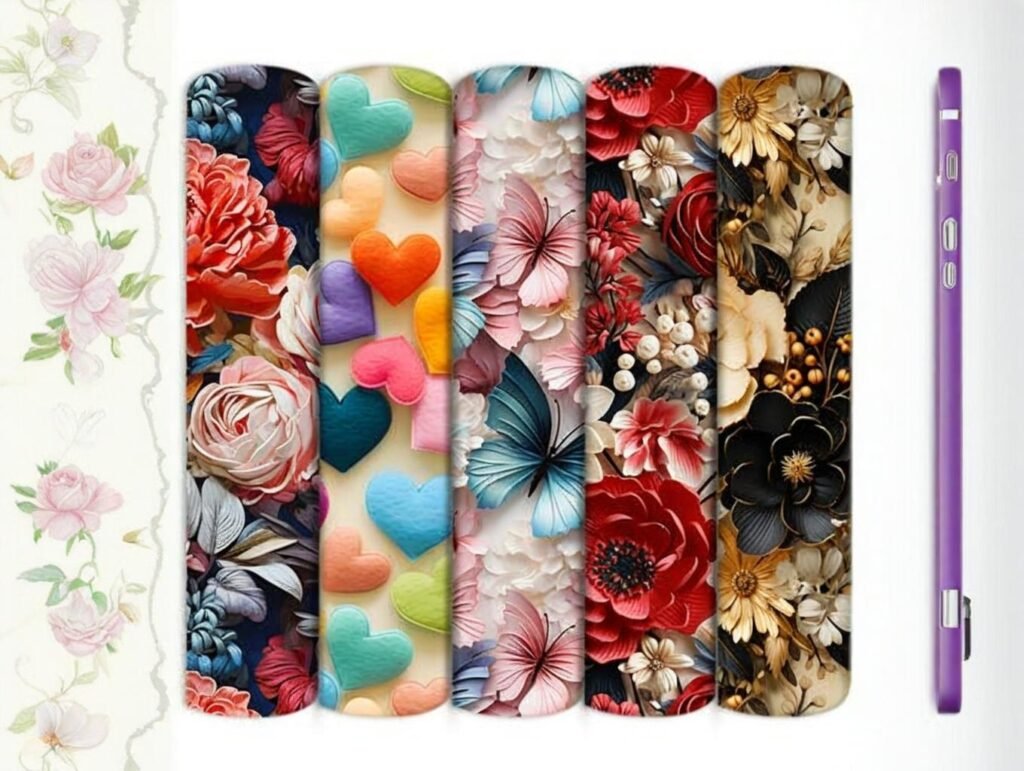
The canvas fabric industry in 2025 is more globally distributed and strategically diversified than ever before. While canvas has been around for centuries, the countries that now lead its production have evolved to meet modern needs—combining heritage weaving traditions with advanced technology, sustainability compliance, and fast delivery systems.
What sets today’s leaders apart is not just how much they produce, but how well they align with brand needs across durability, certifications, customization, and speed. In 2025, the leading countries for canvas fabric manufacturing are China, India, Pakistan, Turkey, and the United States. These nations dominate by offering specialized capabilities—China in volume and customization, India in organic canvas, Pakistan in heavyweight military-grade materials, Turkey in technical finishes and proximity to Europe, and the U.S. in premium niche and compliant production for defense and industrial markets.
Comparing Global Canvas Producers by Strength
| Country | Key Advantages | MOQ Range | Average Lead Time | Niche Specialization |
|---|---|---|---|---|
| 🇨🇳 China | Broad range, lowest cost, flexible finishing | 100–300m | 15–25 days | Custom printing, blended canvas |
| 🇮🇳 India | Organic cotton, GOTS certification, natural dyes | 300–500m | 20–30 days | Eco canvas bags, sustainable fashion |
| 🇵🇰 Pakistan | Military canvas, thick cotton, industrial-grade | 500–800m | 25–35 days | Tarps, tenting, duffels |
| 🇹🇷 Turkey | Short lead times to EU, advanced coating tech | 200–400m | 12–20 days | Coated, waterproof fashion canvas |
| 🇺🇸 USA | High regulation compliance, defense-grade tech | 100–300m | 20–25 days | Ballistic, fire-retardant canvas |
Country-by-Country Breakdown
China: Global Powerhouse of Canvas Fabric Manufacturing
China remains the dominant force due to its unbeatable combination of capacity, innovation, and speed. Cities like Shaoxing, Nantong, and Wujiang form the core of canvas fabric weaving, finishing, and printing.
Competitive Advantages:
- Low MOQ (as low as 100 meters)
- Digital printing & pigment dyeing
- Strong cotton-polyester blending capabilities
- Lead time of just 15–20 days for most SKUs
Use Case: A U.K. streetwear startup ordered 500m of custom-printed 12 oz cotton canvas from a Shaoxing supplier and had samples shipped within 7 working days. They launched on Kickstarter with limited inventory and scaled production post-campaign.
SEO Keyword Notes: Chinese canvas mills rank high for search queries like “custom canvas fabric printing China,” “cotton canvas low MOQ China,” and “canvas supplier with digital print.”
India: Organic Cotton & Eco-Fabric Pioneer
India continues to emerge as a leader in sustainable and certified canvas production, particularly from Tamil Nadu, Gujarat, and Maharashtra.
Why India Leads:
- Over 80 GOTS-certified mills for canvas
- Natural dyeing and low-impact washing techniques
- Focus on 100% cotton, 12–16 oz canvas
- Ideal for bags, tents, home textiles
Use Case: A Scandinavian brand focused on zero-waste sourcing turned to a Tamil Nadu mill to develop recycled-cotton canvas with GRS and GOTS certifications. Their MOQ was 300 meters, with full traceability and a 28-day delivery to port.
Critical Thought: While lead times are slightly longer than China or Turkey, Indian mills offer a cleaner, more story-worthy supply chain—ideal for eco-brand storytelling and EU retailers.
Pakistan: Heavy-Duty Canvas and Military Textile Strength
Pakistan is often overlooked in fashion circles, but it’s a top-tier option for industrial-grade canvas and tactical use. Key regions include Faisalabad and Karachi, known for strong weaving infrastructure.
Key Strengths:
- 16–24 oz rugged canvas production
- Competitive cost per yard
- Double-layered and coated military-grade fabric
- Strong trade history in tarpaulin, military tents, bags
Use Case: A German tactical gear supplier procured 20 oz fire-retardant cotton canvas from Karachi for utility pouches. They reduced costs by 18% compared to Eastern Europe, while meeting NATO test specs.
Buyer Tip: Pakistan mills often require higher MOQs (500m+) but are unmatched in value per unit for rugged textiles. They also support Berry-compliant or NATO-compliant sourcing if needed.
Turkey: Proximity, Compliance, and Style
Turkey has carved a niche as Europe’s go-to canvas supplier for both speed and technical finishing. With a manufacturing hub in cities like Denizli and Bursa, Turkish mills combine tradition with forward-looking textile engineering.
Core Differentiators:
- Shortest average lead time (12–18 days)
- REACH-compliant dye houses and water-saving tech
- Stylish coatings (waxed, UV-resistant, anti-mildew)
- Well-suited for fashion bags, décor, marine use
Use Case: A Danish outdoor furniture brand sourced custom-color 14 oz waterproof cotton canvas from a Bursa-based mill. With Pantone matching and a 14-day door-to-door turnaround, the brand met retail deadlines with ease.
SEO Angle: Turkish mills often rank for searches like “coated canvas supplier Europe,” “waxed canvas for bags,” and “REACH-compliant canvas fabric.”
USA: Specialty Innovation for High-Performance Applications
American canvas mills focus on niche markets with strict regulatory demands, including military, industrial, and outdoor equipment sectors.
Leading Qualities:
- Berry-compliant, NFPA 701 flame-retardant certified
- Ballistic-grade polyester canvas blends
- Anti-tear, water-repellent coatings
- Used in tents, workwear, defense gear
Use Case: A Chicago-based defense subcontractor uses U.S.-made canvas with Cordura® reinforcements and anti-IR coating for military packs. While priced 2–3x above Asian mills, it passes MIL-SPEC testing.
Sourcing Note: U.S. mills are ideal for low-volume, high-performance orders. Brands needing Made in USA labeling or contracts requiring compliance prefer this route despite higher cost.
Global Summary Table: Canvas by Region & Function
| Application Type | Best Country to Source | Reason |
|---|---|---|
| Fashion Bags (Printed) | China, Turkey | Low MOQ, color options, print capability |
| Organic Eco Bags | India | GOTS-certified canvas, sustainable finishes |
| Heavy-Duty Workwear | Pakistan, USA | 20–24 oz canvas, military-grade finish |
| Outdoor Furniture | Turkey, China | Water-resistant, UV-treated options |
| Defense Contracts | USA, Pakistan | Flame-retardant, IR-compliant materials |
Country Choice = Brand Strategy
Choosing your canvas fabric source country isn’t just a price decision—it’s a branding decision, a supply chain decision, and often, a compliance decision.
- Need to move fast with trendy colorways? Go with Turkey or China.
- Telling a sustainability story? Choose India or Pakistan.
- Supplying defense gear or industrial uniforms? Go for the USA or Pakistan.
How Do You Evaluate Canvas Quality Before Bulk Ordering?
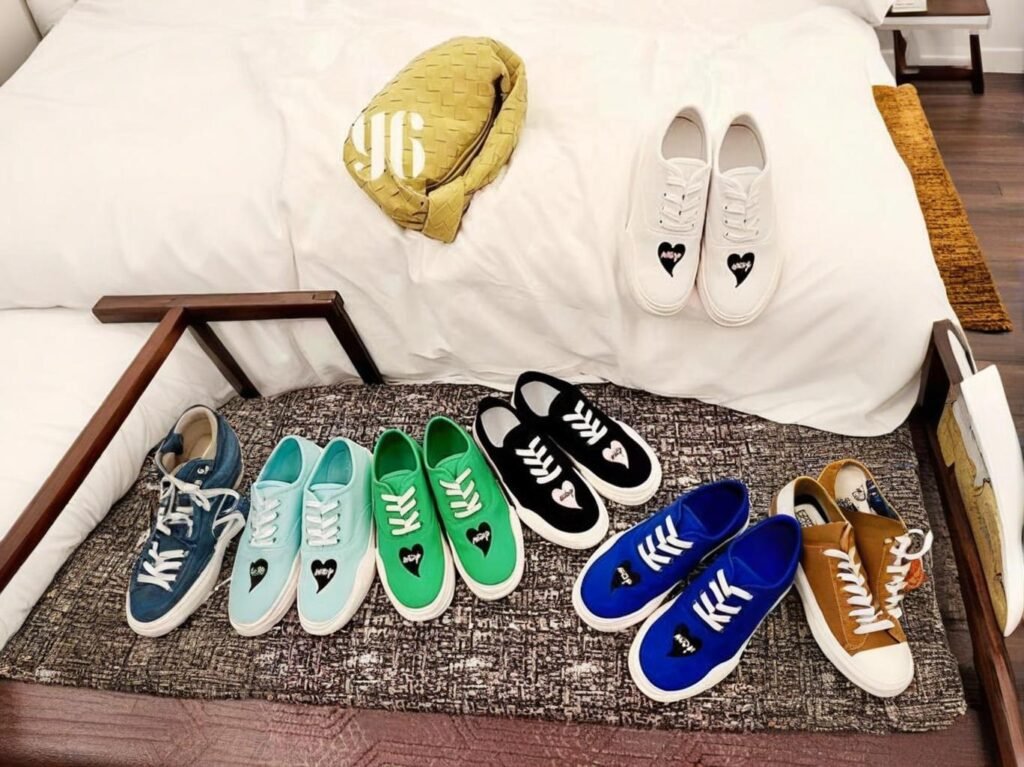
Canvas may seem simple at first glance, but for any brand serious about product durability, aesthetics, and long-term customer satisfaction, the quality of canvas fabric is a make-or-break factor. Too many sourcing teams fall into the trap of judging canvas by color or cost alone—only to discover performance issues after the bulk has arrived.
In 2025, professional buyers have moved beyond the basics. They apply a well-rounded evaluation strategy that blends technical testing, hands-on inspection, and third-party compliance validation to avoid quality pitfalls. To evaluate canvas quality before bulk orders, buyers should assess GSM, weave density, shrinkage, colorfastness, abrasion resistance, and consistency across swatches. Laboratory testing (ISO standards), supplier certifications, and AQL-level batch inspections are essential steps to reduce risk and ensure reliability in bulk production.
Canvas Fabric Quality Testing & Assurance Framework
Let’s explore the key dimensions of fabric evaluation and how they impact product performance, cost, and end-user satisfaction.
1. GSM & Fabric Density: The Structural Foundation
Why It Matters: GSM (grams per square meter) is the first thing buyers check because it dictates the stiffness, weight, and end-use of the canvas.
| GSM Range | Typical Use | Fabric Behavior |
|---|---|---|
| 180–220 GSM | Apron lining, soft bags, utility garments | Lightweight, flexible, breathable |
| 230–280 GSM | Tote bags, outerwear canvas | Moderate structure with comfort |
| 300–400 GSM | Workwear, messenger bags, upholstery | Structured, tough, holds form |
| 450+ GSM | Tarpaulin, tool rolls, industrial use | Thick, rigid, abrasion-resistant |
Testing Tool: Use a GSM cutter (circle cutter) and digital scale. Follow ISO 3801 standards. If your supplier doesn’t test per this method, request a verified lab report.
Critical Insight: Beware of canvas that feels dense but tests lower in GSM—it may be starched or over-finished to appear thicker without real substance.
2. Shrinkage & Colorfastness: The Wash Test
Why It Matters: Even a beautifully dyed or printed canvas can shrink unpredictably, or fade after just a few washes—leading to unhappy customers and returns.
| Property | Test Method | Acceptable Limit |
|---|---|---|
| Colorfastness to Light | ISO 105-B02 | ≥4/5 for apparel, ≥6 for outdoor |
| Colorfastness to Washing | ISO 105-C06 | ≥4/5 across categories |
| Shrinkage After Wash | ISO 5077 | <3% for fashion, <2% for bags |
How to Test at Home:
- Cut a 50x50cm swatch and wash at 40°C.
- Measure post-wash dimensions to calculate % shrinkage.
- Expose swatch to sunlight for 72 hours and observe fade.
Example: A small apparel label in Toronto switched suppliers after repeated shrinkage beyond 4% in 260 GSM garments. The new supplier offered pre-shrunk canvas with ISO 5077 compliance, saving rework time and improving product ratings online.
3. Weave Tightness & Slub Evenness: Visual and Tactile Indicators
Why It Matters: Canvas with inconsistent weave density leads to weak spots, aesthetic flaws, and poor print results.
Evaluation Techniques:
- Hold to Light: Shine a light through the fabric. Even gaps mean uniform weaving; visible holes signal poor tension control.
- Touch Test: Rub your palm across the surface. It should feel evenly textured without abrupt bumps, slubs, or thin streaks.
- Magnification: Use a portable 10x loupe to check yarn consistency.
Pro Tip: Watch out for mills using “open weave” canvas to save weight but simulate high GSM. This creates deceptively thick-looking canvas that underperforms.
4. Abrasion Resistance & Tear Strength: For Demanding Use Cases
Why It Matters: For workwear, tactical gear, tool bags, or outdoor furniture, abrasion and tear performance is key to long-term durability.
| Test | Method | Standard |
|---|---|---|
| Martindale Abrasion | ISO 12947-2 | 15,000+ cycles (basic), 30,000+ (outdoor use) |
| Tear Strength | ISO 13937-2 | 30N+ for fashion, 45N+ for tactical use |
How It’s Done:
- Martindale Test: Simulates rubbing wear over time.
- Tear Strength: Measures resistance to tearing from a single cut or point of stress.
Example: An American tool bag brand tested several 20 oz canvas options. A mill from Pakistan passed 42,000 abrasion cycles in Martindale and 53N in tear strength—making it ideal for long-term tool carry products sold in hardware stores.
5. Lab Swatches vs. Bulk Dye Lots: Don’t Skip This Step
Why It Matters: Dye lots shift between batches, especially with natural-dyed or reactive-dyed canvas. What you approve as a swatch might not match bulk unless properly controlled.
Evaluation Method:
- Approve lab dips before mass dyeing.
- Compare bulk greige and dyed canvas under D65 light to spot shade variances.
- Use Pantone TPG or Lab color values* for objective matching.
Tip: Ask for 1-meter test cuts from the actual bulk roll. Even better—get photos or videos of bulk production under lightboxes.
6. Third-Party Testing & Quality Control: Invest Before You Commit
Why It Matters: Pre-shipment inspections and third-party testing can save thousands in return shipping and lost sales.
Trusted Partners:
- SGS
- Intertek
- Bureau Veritas
- TÜV SÜD
What to Include in Inspection:
- GSM and shrinkage check
- Shade variation vs. approved lab dip
- AQL 2.5 visual inspection (random 5% sampling)
- Tear and abrasion test (where applicable)
- Packaging and labeling verification
Real Case: A Canadian lifestyle brand avoided $18,000 in returns when their third-party inspector flagged pilling and poor dye fastness on 350 GSM canvas ordered from India. They re-negotiated compensation before shipping.
Final Takeaways: Quality Checklist Before You Place Your Canvas Order
| Criteria | Acceptable Standard | Importance |
|---|---|---|
| GSM | Matches spec ±5% | Critical |
| Shrinkage | <2–3% | High |
| Colorfastness | Grade 4/5 min | High |
| Weave | Tight, uniform, no slubs | High |
| Abrasion | 15,000+ cycles | Medium–High |
| Tear Strength | 30–50N+ | Medium |
| Lab Dip Match | Within 5% Delta E | High |
| 3rd Party QC | AQL 2.5 | Very High |
What MOQ and Lead Time Can You Expect from Leading Suppliers?
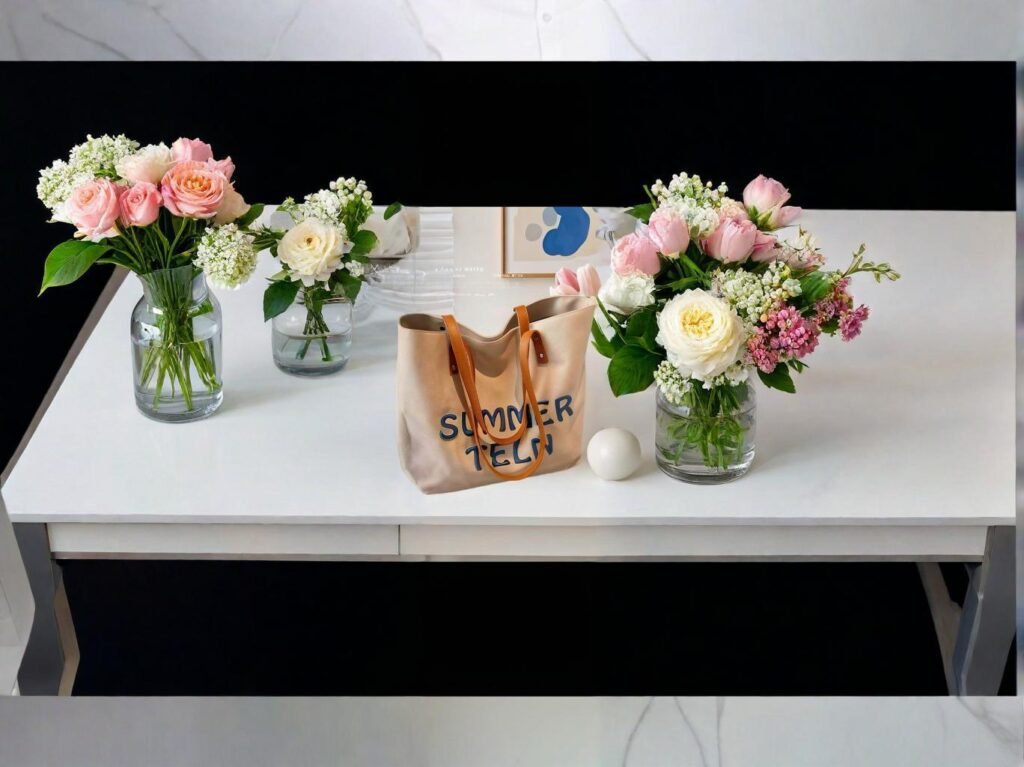
When sourcing canvas fabric in 2025, understanding your supplier’s MOQ (Minimum Order Quantity) and lead time is as important as the fabric specs themselves. These two factors directly affect your budget, inventory planning, production timeline, and ability to respond to market changes. As brands increasingly move toward agile development cycles, the best suppliers are responding with more flexibility—without sacrificing quality. In 2025, top canvas suppliers typically offer MOQs from 100 to 300 meters for standard fabrics, and 500 to 1000 meters for customized options like dyeing or waterproof coating. Lead times range from 15 to 30 days depending on region, customization level, and sampling cycles. Fast sampling, pre-treated fabrics, and regional proximity can significantly cut turnaround.
MOQ and Lead Time — What to Really Expect?
Let’s break down what influences MOQ and lead times, and how you can leverage supplier strengths to hit your own launch deadlines.
1. MOQ: Not Just a Number—A Production Threshold
Your MOQ determines the entry barrier for launching a new product line, especially for small batch and custom designs. Leading canvas manufacturers offer tiered MOQs based on the complexity and level of customization.
| Fabric Type | MOQ Range | Typical Scenario |
|---|---|---|
| In-stock plain canvas | 100–300m | Small brands testing the market |
| Solid color dyeing (custom Pantone) | 300–500m | Custom branded tote bags or apparel |
| Screen/digital printed canvas | 500–800m | Graphic fashion pieces, retail displays |
| Coated canvas (waxed, PU, PVC) | 500–1000m | Outdoor gear, industrial products |
| Flame retardant / performance-treated canvas | 800–1500m | Safety gear, marine textiles |
Key Insight: Some suppliers will lower MOQ if you’re willing to use leftover or surplus colors from previous batches. That’s a cost-effective and eco-friendly entry strategy.
2. Lead Time: How Fast Can You Actually Launch?
Production speed isn’t uniform across regions or canvas types. Knowing where your supplier sits in the lead time hierarchy can save you from launch delays.
| Region | Typical Sampling Time | Average Production Time | Total Lead to U.S. / EU |
|---|---|---|---|
| China | 5–7 days | 15–25 days | 30–40 days (by sea) |
| India | 7–10 days | 20–30 days | 35–45 days (by sea) |
| Turkey | 3–5 days | 12–20 days | 20–35 days (truck/sea) |
| USA | 5–7 days | 15–20 days | 5–10 days (domestic) |
Speed Optimization Tip:
- Use air freight for urgent 100–300m orders from Asia (adds ~$1–2/meter shipping cost).
- Leverage regional proximity (e.g., Turkey for EU, Mexico for North America) to save both time and customs complexity.
3. What Affects Lead Time the Most?
The following variables commonly extend or reduce lead times:
| Factor | Impact on Lead Time | Notes |
|---|---|---|
| Lab Dip Approval | +3–7 days | Waiting for buyer sign-off can delay schedule |
| Custom Printing | +5–10 days | Includes file preparation, strike-off approval |
| Chemical Finishes (e.g., FR, PU) | +7–15 days | Needs curing, compliance testing |
| Machine Downtime/Queue | +Variable | Busy season or old machinery increases delay |
| Holiday Schedules | +5–15 days | Especially around Lunar New Year, Diwali, Ramadan |
Real Case: A London-based fashion startup planned a 1,000-meter order of enzyme-washed olive canvas for a capsule collection. They chose a Turkish mill that delivered pre-washed, Pantone-matched stock within 18 days, vs the original Indian mill’s 30-day estimate. This allowed a timely PR campaign and gained them visibility in a top-tier fashion blog.
4. Fast-Track Options & MOQ Negotiation Strategies
Some mills offer fast-track or express production slots at a premium—useful when tied to retail launch windows or trade show dates.
Here’s how to speed things up without paying double:
- Request stock color options and match your brand color closely to avoid dyeing.
- Bundle multiple SKUs in same base color to increase yardage under one batch.
- Use digital printing over screen printing for small quantities and quicker turnarounds.
- Choose pre-treated fabrics (e.g., pre-shrunk, pre-coated) to skip finishing time.
Negotiation Tip: Suppliers are often more flexible with MOQ and speed if you commit to reorders or annual forecasts. You don’t need to commit in writing—just signal your growth plan.
5. MOQ vs. Cost: The Trade-Off Balance
Let’s not forget the elephant in the room—lower MOQ usually means higher cost per meter. But the tradeoff often makes sense for young brands.
| Order Volume | Price per Meter (Estimated) | Notes |
|---|---|---|
| 100–300m | $3.00–$5.00 | Custom color surcharge likely |
| 500–800m | $2.50–$4.20 | Lower price per color |
| 1000m+ | $1.80–$3.50 | Full production pricing available |
Smart Buyers Ask:
- “What’s your break point for price drops?”
- “Can you hold this price for reorders?”
- “What’s the surcharge if I dip below MOQ?”
Case Study: Holiday Launch, Just in Time
A California-based pet gear brand needed 400 meters of printed waterproof canvas for a Halloween-themed collection. Their Chinese supplier required 500m MOQ for screen print, so they switched to digital print—raising cost by $0.40/meter but enabling a 16-day production and 4-day air freight delivery. They hit Halloween sales perfectly, sold out in 3 weeks, and reordered in November using the same print file.
Plan Smart, Source Smart
MOQs and lead times don’t have to be scary. With the right supplier and a bit of planning, even small teams can move like big players. The key is transparency, pre-approval, and being smart about where to flex and where to push back.
Which Manufacturers Offer the Best Customization Services?

In a saturated product market, customization is the currency of brand differentiation. Whether you’re developing urban utility bags, artisan aprons, or high-performance outdoor gear, cookie-cutter canvas simply won’t cut it. In 2025, the leading canvas fabric manufacturers are redefining what “custom” means—not just offering options, but partnering with brands to create entirely unique, scalable, and value-driven textile solutions. The top canvas manufacturers in 2025 offer advanced customization services including Pantone color matching, screen and digital printing, GSM adjustment, functional coatings (e.g., waterproof, FR), and private label packaging. Many now support low MOQs (100–300m), quick lab dips (3–7 days), and sampling within 5–10 working days, empowering small brands to go big with their identity.
How the Best Fabricators Customize Canvas for You
Let’s walk through what top-tier customization looks like across five key areas, complete with real use cases and comparison tables.
1. Color Customization & Pantone Precision
Color is branding—and precision matters.
Best-in-class suppliers now offer:
- Lab dips within 3–7 days
- Pantone TPX, RGB, HEX, or physical swatch matching
- Garment-wash tests to ensure fade resistance and consistency
| Coloration Method | Key Benefits | MOQ Range | Notes |
|---|---|---|---|
| Reactive Dye | Deep penetration, durable | 300–500m | Best for apparel |
| Pigment Dye | Softer tone, vintage look | 200–400m | Great for fashion bags |
| Dope Dyed Yarn | Excellent consistency | 1000m+ | Used in industrial canvas |
| Natural Dyes | Eco appeal, muted tones | 100–300m | Popular with eco-conscious brands |
Case Tip: A Danish fashion brand used pigment-dyed canvas for a pastel tote line. MOQ was only 250 meters, with five Pantone shades achieved across one base fabric, thanks to digital lab controls.
2. Print Customization: Logos, Patterns & Artwork
Whether you’re launching a limited-edition run or printing your entire brand identity across products, printing defines your product’s visual DNA.
| Print Type | Max Colors | MOQ | Use Case |
|---|---|---|---|
| Screen Printing | 1–3 | 300–500m | Logos, slogans |
| Digital Printing | Full color | 100–300m | Artwork, fashion |
| Rotary Printing | Up to 12 | 800–1500m | High-volume repeats |
Pros of Digital Print in 2025:
- No screens = faster, cheaper for small batches
- Water-based inks = more eco-compliant
- Design flexibility = more brand personality
Real-World Example: A Canadian cycling accessory brand worked with an Indian mill to produce 200 meters of digitally printed organic canvas featuring gradient reflective patterns. The result? A glow-in-the-dark reflective messenger bag that stood out—literally—on the market.
3. Structural Customization: GSM, Weave & Texture
Canvas isn’t just canvas. The texture, feel, and durability depend on its gram weight, weave type, and yarn twist. Top suppliers offer full tailoring of structure to match form with function.
| Variable | Range / Options | Application |
|---|---|---|
| GSM | 180–600+ | Light apparel to industrial covers |
| Weave Types | Plain, twill, duck, basket, oxford | Changes drape, hand feel |
| Yarn Type | Ring-spun, open-end, combed, slub | Impacts softness, durability |
| Finish | Brushed, peach, waxed, embossed | Aesthetic & tactile enhancement |
Tip: Always request feel and drape samples before bulk orders—especially for apparel and bags. Many top suppliers now offer 3D virtual swatches to preview weave and texture.
4. Functional Finish Customization
Need your canvas to repel water? Resist fire? Last through snow, salt, and mildew? No problem. Advanced suppliers now offer full performance customization without compromising on appearance.
| Finish Type | Application | MOQ Impact |
|---|---|---|
| PU Coating | Waterproof bags, tents | +200m |
| PVC Laminate | Industrial tarps, outdoor use | +300m |
| Waxed Canvas | Heritage bags, jackets | +150m |
| FR Treatment (NFPA701, EN11612) | Military, safety, interiors | +500m |
| Anti-Mildew / Antimicrobial | Bathroom, outdoor | +250m |
| Enzyme Wash | Soft, vintage look | +100m |
Buyer Alert: Always ask for lab reports for technical coatings. Some suppliers cut corners on waterproofing or use uncertified FR treatments—especially if they offer rock-bottom pricing.
5. Private Label & Custom Branding Services
A growing number of canvas manufacturers are expanding into OEM/OEM+ capabilities, helping brands streamline production and reduce the need for multiple vendors.
Private label options may include:
- Custom-printed selvage branding
- Roll labeling with barcode and SKU systems
- Branded packaging tubes or wraps
- Ready-to-retail bag panel pre-cutting with your artwork
- Branded tags and swing cards
Example: A luxury beachwear startup in Australia sourced 400m of waxed canvas from a Chinese supplier who also added hangtags, printed inner labels, and packed pre-cut bag panels for final assembly at the brand’s in-house workshop. It saved them over 30% in labor and packaging costs.
Top Customization-Driven Suppliers
| Supplier Country | Strengths | Sample Time | Custom MOQ | Print Types |
|---|---|---|---|---|
| China | Full-stack customization, fast sampling | 5–7 days | 100–300m | Screen, digital, rotary |
| India | Organic canvas, pigment dye, eco finishes | 7–10 days | 300–500m | Digital, screen |
| Turkey | Stylish coatings, FR, EU compliance | 3–5 days | 200–600m | Screen, digital |
| USA | Berry compliance, military custom specs | 5–7 days | 300–800m | Screen, emboss |
Not All Custom is Created Equal
Beware of low-cost suppliers offering “custom” services without:
- Colorfast testing
- Shrinkage control
- Standardized dyehouse procedures
- Language and communication fluency
If your brand depends on reliable customization, prioritize manufacturers with:
- In-house dye and print labs
- Digital tech integration (3D previews, AI QC)
- Track record of delivering exact Pantone matches
Ready to Create Your Own Canvas Signature?
Whether you’re prototyping your first product or scaling up a bestselling design, SzoneierFabrics delivers full-spectrum canvas customization—from Pantone-matched dyeing to functional coatings and branded packaging. We offer low MOQs, fast sampling, and expert guidance from concept to delivery.
Reach out now to get free sample cards, a personalized customization roadmap, or explore our ready-to-print canvas inventory. Let’s bring your ideas to life—beautifully and reliably.
How Do Canvas Fabric Suppliers Approach Sustainability?
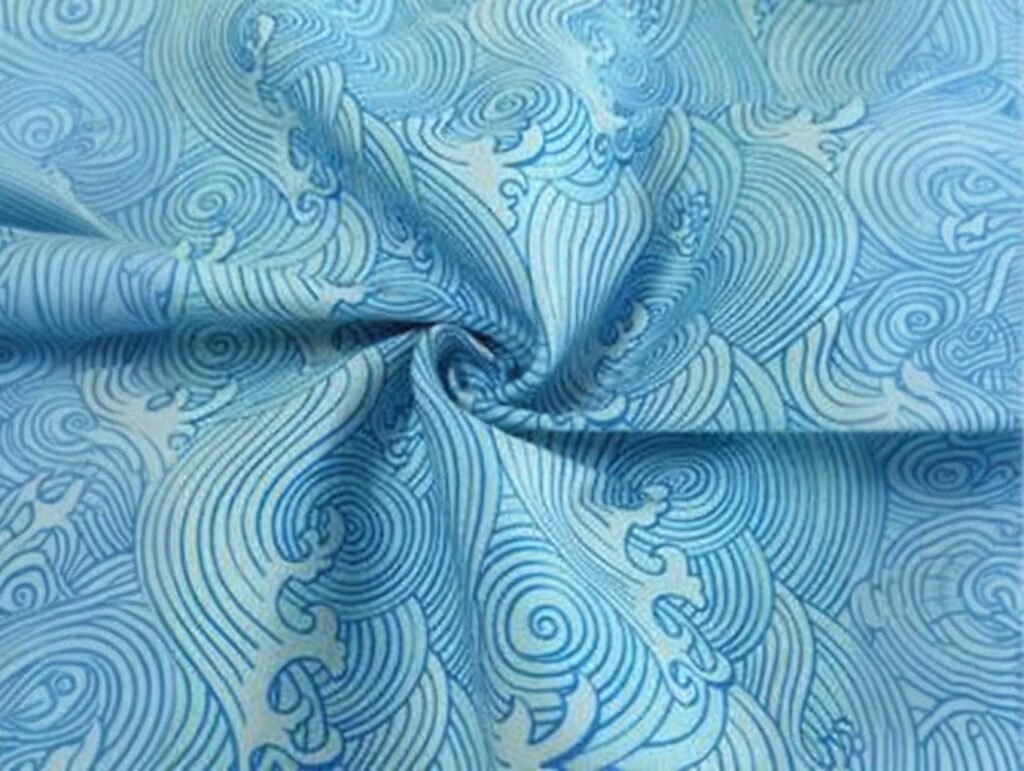
Sustainability is no longer a “nice-to-have” in the textile supply chain—it’s a non-negotiable. The canvas fabric industry, traditionally known for ruggedness over refinement, has rapidly evolved to meet the sustainability demands of brands, regulators, and end-consumers alike. From the cotton field to the finishing room, manufacturers are reengineering their operations to balance durability, ethics, and eco-impact. Leading canvas suppliers in 2025 prioritize sustainability through organic and BCI cotton sourcing, recycled fiber integration, closed-loop water systems, low-impact dyeing, and solar-powered production. Certifications like GOTS, GRS, OEKO-TEX, and ISO 14001 ensure traceable, environmentally responsible manufacturing.
1. Raw Material Sourcing: The Foundation of Sustainable Canvas
The sustainability journey begins with fiber selection. Cotton remains the core fiber in most canvas—but how it’s grown or sourced changes the environmental footprint significantly.
| Fiber Type | Key Certification | Sustainability Benefit |
|---|---|---|
| Organic Cotton | GOTS | No synthetic fertilizers or pesticides, 88% less water use |
| BCI Cotton | Better Cotton Initiative | Ethical farming, soil health, farmer welfare |
| Recycled Cotton | GRS | Diverts post-industrial waste, reduces virgin fiber demand |
| Recycled PET (for poly blends) | GRS | Upcycles plastic bottles into fabric yarns |
Real Practice: Many Indian and Pakistani suppliers now offer GOTS-certified organic canvas for eco-conscious fashion and packaging clients. Chinese and Turkish mills often specialize in GRS-certified recycled cotton for circular design programs.
2. Low-Impact Dyeing & Finishing: Saving Water & Reducing Toxins
Dyeing is one of the most water-intensive and pollutive processes in textiles. Top mills now implement:
- Cold Pad Batch Dyeing (CPB): Uses 50–60% less water and energy
- Dope Dyeing (solution dyeing): Adds pigment at the fiber stage—no water waste, excellent fastness
- Digital Printing with Water-Based Inks: Reduces ink consumption and runoff
- Natural Wax or Oil Finishes: Biodegradable alternatives to petroleum-based coatings
| Process | Environmental Gain |
|---|---|
| CPB Dyeing | Lower water and heat usage |
| Dope Dyeing | Eliminates dye baths entirely |
| Enzyme Washing | Uses biological agents vs. chemicals |
| Plant-Based Waxing | No VOCs, biodegradable finish |
3. Green Energy & Carbon Reduction: Rewiring the Mill
Modern canvas producers are investing in cleaner energy sources and smarter infrastructure to reduce their carbon footprint.
| Strategy | Description | Adoption Example |
|---|---|---|
| Solar-Powered Weaving | Solar panels power looms | Common in India, Turkey |
| Biomass Boilers | Use rice husk, sawdust, etc., for heat | Adopted in China and Pakistan |
| Closed-Loop Water Recycling | Reuses up to 95% of process water | Seen in China’s ZDHC-compliant mills |
| Carbon Audits & EPDs | Track and disclose carbon impact | U.S. and EU mills standardizing this |
Sustainability Spotlight: A mill in Jiangsu, China, reported saving over 1.5 million liters of water per month by implementing a closed-loop dyeing system, verified under the ZDHC (Zero Discharge of Hazardous Chemicals) framework.
4. Industry Certifications: Proof Over Promises
Serious manufacturers now back sustainability claims with third-party certifications, showing traceability and compliance across fiber, process, and chemical safety.
| Certification | Covers | Ideal For |
|---|---|---|
| GOTS | Organic fiber + ethical process | Apparel, accessories |
| GRS | Recycled content + traceability | Circular collections |
| OEKO-TEX 100 | Human chemical safety | Skin-contact products |
| ISO 14001 | Environmental system management | Enterprise sustainability |
| ZDHC Gateway | Chemical transparency | Brands with clean chemical goals |
Buyer Tip: Ask for scope certificates—not just logos. Ensure certification covers the specific product or mill, not just the corporate office.
5. Circular Design Partnerships: Beyond Just Recycled
Some advanced mills are working directly with brands to build circular product systems, which means:
- Reclaiming cutting scraps or post-consumer canvas
- Sorting, shredding, and re-spinning yarns into new fabric
- Offering “return to mill” programs to reduce brand textile waste
Real-World Example: A Scandinavian tent company partnered with a Turkish mill to create a fully recyclable canvas tent, using mono-fiber organic cotton, wax-free waterproofing, and a take-back program. The canvas could be broken down and rewoven with up to 80% efficiency—lowering environmental impact and creating a unique value proposition.
Case Study: Measurable Impact in Canvas Fabric Sourcing
A California-based camping gear brand transitioned from conventional dyed cotton to GRS-certified recycled canvas with dope dyeing and solar-powered weaving. The result?
| Impact Metric | Result (12-Month Period) |
|---|---|
| Water Saved | 70,000+ liters |
| Carbon Reduction | -26% across SKUs |
| Waste Diverted | 4.2 metric tons of cotton scraps reused |
| Time to Market | 17% faster via local dye approval system |
The brand used this data in marketing, strengthening their position in eco-conscious retail partnerships across REI and Backcountry.com.
Sustainability Isn’t a Trend—It’s Your Brand Insurance
As ESG (Environmental, Social, and Governance) standards become more common in procurement and retail partnerships, your canvas supplier’s sustainability practices become your brand’s liability or asset.
Ask these questions before sourcing:
- What’s your fiber source breakdown? (% organic/recycled vs. conventional)
- Can you share water/energy usage reports from the last year?
- Are you compliant with ZDHC or ISO 14001?
- Do you have circular design programs or take-back schemes?
Do Canvas Manufacturers Offer Testing & Compliance for Commercial Use?
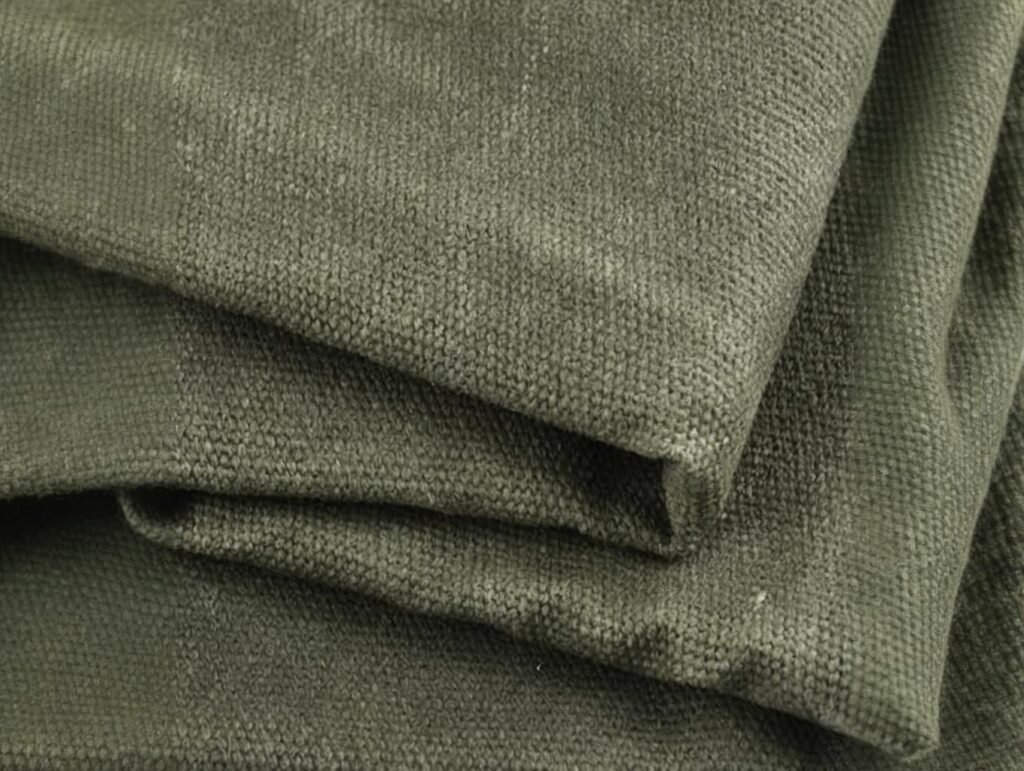
Yes—and in 2025, they don’t just offer it; they are expected to build it into every stage of production. Whether canvas fabric is used in commercial-grade backpacks, outdoor upholstery, marine tarps, or fire-retardant tents, the demand for verifiable compliance and performance is non-negotiable. Top-tier brands, procurement managers, and government buyers now require full documentation before confirming a bulk order. Yes, canvas manufacturers in 2025 offer testing and compliance services for commercial use, covering flammability, abrasion resistance, colorfastness, and chemical safety. They comply with standards like REACH, CA Prop 65, NFPA 701, EN ISO, and provide batch-level test reports and traceability documentation for professional buyers.
1. Commercial Testing: What Canvas Needs to Prove—and Why
Canvas fabric intended for commercial or regulated use must meet specific performance standards depending on the application. Failure to do so can lead to product recalls, contract loss, or brand liability.
Here’s a breakdown of critical test types and industry use cases:
| Test Type | Applies To | Standard |
|---|---|---|
| Tensile Strength | Bags, tents, covers | ISO 13934-1 |
| Tear Resistance | Industrial use, tarps | ASTM D2261 |
| Abrasion Resistance | Workwear, upholstery | ISO 12947 (Martindale) |
| Colorfastness to Light | Outdoor apparel, decor | ISO 105-B02 |
| Water Repellency | Coated canvas, awnings | AATCC 22 |
| Flammability | Public furniture, uniforms | NFPA 701, EN 13501-1 |
| Mildew Resistance | Marine and humid-use canvas | ASTM G21 or ISO 846 |
| Shrinkage | Apparel, covers | ISO 5077 |
Insight: Commercial buyers in sectors like hospitality, military, automotive, and outdoor must meet local fire codes, UV requirements, or chemical bans. This makes testing a critical part of product development—not a last-minute check.
2. Chemical & Health Safety Compliance: Required by Law
Increasing global scrutiny around chemical exposure and toxicity has led governments to tighten compliance enforcement, especially for textiles. The most requested certifications include:
✅ REACH (EU):
- Covers over 2000+ banned/restricted substances.
- Requires SVHC (Substances of Very High Concern) disclosure.
- Applicable to any product sold in the EU.
✅ California Proposition 65 (USA):
- Requires warning labels on products containing certain harmful substances (e.g., phthalates, lead).
- Applies even if exposure is minimal—strictest textile regulation globally.
✅ OEKO-TEX Standard 100:
- Voluntary but widely accepted proof that fabrics are safe for skin contact—tested for over 100 harmful substances.
Buyer Tip: If you’re supplying to schools, hotels, or baby product companies, OEKO-TEX is often mandatory—even if your product is just a liner or trim.
3. Batch-Level Quality Control & Documentation
Reputable canvas mills understand that consistency and traceability are just as important as passing tests. That’s why they implement:
| Feature | Benefit |
|---|---|
| Roll Marking / Batch IDs | Lets buyers trace back any defect to specific production run |
| Certificate of Analysis (COA) | Summarizes all test results for that batch |
| QR Code or Barcode Tracking | Streamlines warehousing and compliance auditing |
| Sample Retention Policy (12–24 months) | Enables re-testing or complaint validation |
Case Insight: A German outdoor gear brand discovered fabric shrinkage exceeding their 2% tolerance. The Turkish mill had retained the approved lab dip and batch samples, enabling them to quickly identify and correct the issue—avoiding a full recall.
4. Custom Compliance Testing with Global Labs
For high-risk or regulated use (military, outdoor, medical), many buyers opt for third-party lab testing using global agencies such as:
- SGS
- Intertek
- TÜV SÜD
- Bureau Veritas
This includes:
- Full compliance test reports (PDF or hard copy)
- Pass/fail grading on requested standards
- Material safety data sheets (MSDS)
Manufacturers typically handle logistics and cost negotiation with the lab, then include results in the final shipment package.
Optional but Useful Tests:
| Test | Why It’s Important |
|---|---|
| ISO 105-X12 | Rubbing/crocking resistance (print durability) |
| ISO 6330 | Home laundering simulation |
| ASTM D6413 | Vertical flame resistance for fire safety |
| ISO 5077 | Shrinkage evaluation after washing |
5. Compliance in Real Life: A Use Case from Marine Industry
Scenario: A U.S.-based boating accessory company was bidding for a military supply contract. The requirement: a flame-retardant, mildew-resistant, water-repellent canvas, fully compliant with NFPA 701, ASTM D6413, and ISO 105-E02 for UV exposure.
Solution: Their Chinese manufacturer partnered with Intertek to conduct all testing, issued COAs per roll, and provided digital traceability. This allowed the buyer to pass U.S. Coast Guard textile audit with zero non-conformities, securing a three-year blanket contract worth $1.2 million.
Buyer Tip: Don’t Assume—Verify Compliance Early
Professional sourcing starts with asking the right questions. Here’s what you should ask your canvas supplier before placing a bulk order:
- Which tests do you run for my product type?
- Can I see a sample test report for a recent batch?
- Do you work with third-party labs?
- Will you include COAs and batch tracking IDs on every roll?
- Can you customize compliance to my market’s legal standards?
These steps don’t just reduce risk—they give you an edge in B2B negotiations, retail approvals, and brand reputation.
Compliance Is a Feature, Not a Surcharge
In 2025, compliance isn’t just about avoiding legal trouble—it’s a value proposition. Buyers now expect suppliers to have traceable systems, rigorous QC protocols, and up-to-date testing capabilities.
At SzoneierFabrics, we offer:
- ISO, NFPA, OEKO-TEX, and REACH-compliant canvas
- Full test documentation and lab partnerships
- Custom testing plans for new designs or market entry
What Are the Best 16 Canvas Fabric Manufacturers to Work With in 2025?
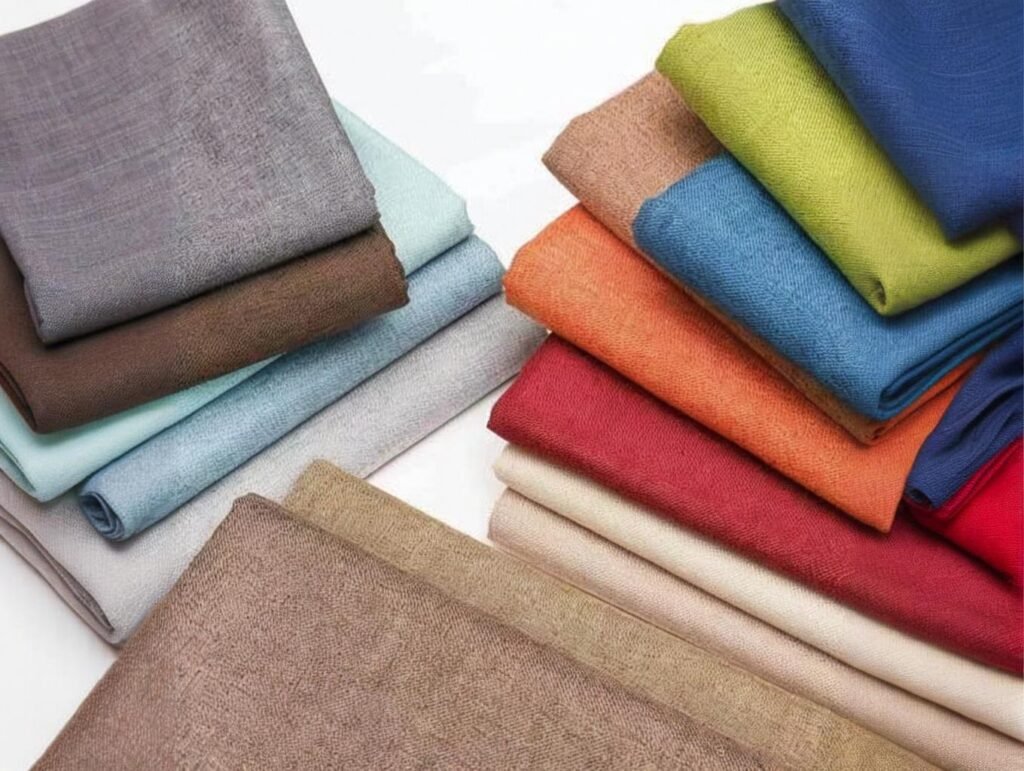
With global demand for durable, customizable, and sustainable canvas surging across industries—from fashion to military gear—choosing the right manufacturer can define your success or failure in production. Price alone no longer determines a supplier’s value. Buyers in 2025 care about:
- Consistent product quality
- Low minimums and fast sampling
- Certifications and compliance
- Transparency and reliable communication
- Customization capabilities across weave, weight, and finish
This is where our curated list comes in.
Direct Answer (Google Snippet Optimized): The top 16 canvas fabric manufacturers in 2025 include Carr Textiles (USA), Arvind Mills (India), SzoneierFabrics (China), and others. These suppliers lead in quality, customization, sustainability, and compliance, serving global buyers across industries with flexible MOQs and export-ready logistics.
2025 Canvas Manufacturer Benchmark
| Rank | Manufacturer | Country | Specialties | Certifications |
|---|---|---|---|---|
| 1 | Carr Textiles | USA | Military-spec canvas, dyed duck cloth, wide stock range | ISO 9001, Berry Compliant |
| 2 | Arvind Mills | India | Organic and recycled cotton canvas, massive capacity | GOTS, OEKO-TEX, BCI |
| 3 | SzoneierFabrics | China | Customizable canvas, low MOQ, rapid lead time | Internal QC, ISO-equivalent, 100% QA |
| 4 | Texunion Industrial | Taiwan | Canvas blends with PU, FR, and anti-fungal coatings | bluesign®, ISO 14001 |
| 5 | Yamada Textile Co. | Japan | Heritage-grade canvas, artisanal quality | OEKO-TEX, REACH |
| 6 | Panaz Fabrics | UK | Fire-retardant canvas for hospitality upholstery | EN 1021, BS 7176, ISO |
| 7 | Zhejiang Qianxi Canvas | China | Heavy-duty tarps, waterproofed roll goods | ISO 9001, Custom FR options |
| 8 | Duck Cloth USA | USA | Pre-dyed canvas for craft, fashion, and industrial use | Made in USA |
| 9 | Canvalon Textiles | Turkey | Waxed canvas, apparel-ready finishes | OEKO-TEX, GRS Certified |
| 10 | Birla Century | India | Luxury home canvas, eco-conscious production | ISO 45001, OEKO-TEX |
| 11 | Söktas Tekstil | Turkey | Low-impact dyed canvas for apparel | GOTS, bluesign® |
| 12 | Jinda Canvas | China | Budget bulk canvas for bags and tents | ISO 9001 |
| 13 | Klopman International | Italy | FR workwear canvas, technical fabric solutions | EN 11612, EN 1149 |
| 14 | Nishat Mills | Pakistan | GOTS-certified canvas blends for global buyers | GOTS, BCI |
| 15 | TIO Group | Vietnam | Digital printed canvas for fashion/decor | REACH, in-house DTF print lab |
| 16 | Canvas Etc. | USA | Technical canvas with waterproof or mildew treatments | ASTM Compliant, ISO Standards |
Why These 16 Canvas Suppliers Stood Out
Each was selected based on five critical metrics that global buyers care about in 2025:
| Evaluation Criteria | Why It Matters |
|---|---|
| Product Versatility | Ability to supply from 180 GSM fashion canvas to 600 GSM tarpaulin-grade fabric |
| MOQ Flexibility | Willing to work with orders starting from 100–300 meters |
| Customization Services | Pantone dyeing, screen/digital/rotary printing, coatings, embossing |
| Certifications & Testing | REACH, OEKO-TEX, GOTS, ISO, NFPA, EN compliance per product need |
| Global Export Support | Freight management, customs clearance documents, traceable roll IDs |
Why SzoneierFabrics Made the Top 3
As a China-based canvas R&D and production factory, SzoneierFabrics has positioned itself as a partner rather than just a supplier. While large mills serve volume-focused clients, Szoneier works closely with small to mid-size brands that need:
- Tailored fabric weights (from 180 to 600+ GSM)
- Custom weave types (duck, basket, twill, herringbone)
- Advanced finishes (PU, wax, FR, water-repellent, antimicrobial)
- Fast development cycles with low-risk MOQs (starting at 100m)
- Sample development within 3–7 days
Bonus: They provide free design support, free swatches, and short production lead times—a game changer for startups, seasonal brands, and special collections.
Partnering with the Right Canvas Manufacturer
Your choice of canvas fabric manufacturer can determine everything from:
- The appearance and durability of your final product
- Your brand’s sustainable impact
- Your ability to meet testing and compliance regulations
- Your ability to scale production fast during demand spikes
Whether you’re creating rugged utility bags, boutique home goods, or climate-ready apparel, the best suppliers help you innovate—not just produce.
Ready to Work with a Canvas Manufacturer Who Gets It?
SzoneierFabrics is built for brands who want more than a fabric supplier. We are:
✅ A development partner for private labels and OEMs
✅ A responsive production team with 100% QC
✅ A flexible factory that grows with your business
We offer:
- 🔧 Full customization across GSM, color, coatings, and weave
- 📦 MOQ from just 100 meters
- 🎨 Free mockup and design consultation
- 🚚 Fast lead time: 5–12 days from confirmation
- 🌍 Export-ready documentation and logistics coordination
📩 Contact us today to request:
- A free canvas sample pack
- A custom quote based on your specs
- Or a brief consultation with our product engineer team
👉 Let’s make your next canvas product not only durable—but distinct.
